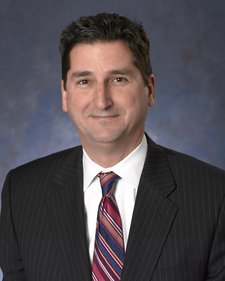
By JAMES CHEN
Feb. 1, 2023
The term federal funds rate refers to the target interest rate set by the Federal Open Market Committee (FOMC). This target is the rate at which commercial banks borrow and lend their excess reserves to each other overnight. The FOMC, which is the policymaking body of the Federal Reserve System, meets eight times a year to set the target federal funds rate, which is part of its monetary policy. This is used to help promote economic growth.1

iStock image
KEY TAKEAWAYS
- The federal funds rate is the target interest rate set by the FOMC.
- This is the rate at which commercial banks borrow and lend their excess reserves to each other overnight.
- The FOMC sets a target federal funds rate eight times a year, based on prevailing economic conditions.1
- The federal funds rate can influence short-term rates on consumer loans and credit cards.
- Investors keep an eye out on the federal funds rate as well because it has an impact on the stock market.
Understanding the Federal Funds Rate
The federal funds rate refers to the interest rate that banks charge other institutions for lending excess cash to them from their reserve balances on an overnight basis. By law, banks must maintain a reserve equal to a certain percentage of their deposits in an account at a Federal Reserve bank. The amount of money a bank must keep in its Fed account is known as a reserve requirement and is based on a percentage of the bank's total deposits.23
Financial institutions are required to maintain interest-bearing accounts at Federal Reserve banks to ensure they have enough money to cover depositors' withdrawals and other obligations. Any money in their reserve that exceeds the required level is available for lending to other banks that might have a shortfall.45
The end-of-the-day balances in the bank's account averaged over two-week reserve maintenance periods are used to determine whether it meets its reserve requirements. If a bank expects to have end-of-the-day balances greater than what's required, it can lend the excess to an institution that anticipates a shortfall in its balances. The interest rate the lending bank can charge is the federal funds rate, or fed funds rate.36
The FOMC makes its decisions about rate adjustments based on key economic indicators that may show signs of inflation, recession, or other issues that can affect sustainable economic growth. The indicators can include measures like the core inflation rate and the durable goods orders report.
The target for the federal funds rate has varied widely over the years in response to the prevailing economic conditions. It was set as high as 20% in the early 1980s in response to inflation. With the coming of the Great Recession of 2007 to 2009, the rate was slashed to a record-low target of 0% to 0.25% in an attempt to encourage growth.2
Special Considerations
The FOMC cannot force banks to charge the exact federal funds rate. Rather, the FOMC sets a target rate as a guidepost. The actual interest rate a lending bank will charge is determined through negotiations between the two banks. The weighted average of interest rates across all transactions of this type is known as the effective federal funds rate.2
While the FOMC can't mandate a particular federal funds rate, the Federal Reserve System can adjust the money supply so that interest rates will move toward the target rate. By increasing the amount of money in the system it can cause interest rates to fall. Conversely, by decreasing the money supply it can make interest rates rise.9
Besides the federal funds rate, the Federal Reserve also sets a discount rate, which is the interest rate the Fed charges banks that borrow from it directly. This rate tends to be higher than the target fed funds rate, partly to encourage banks to borrow from other banks at the, lower, federal funds rate.10
Impact of the Federal Funds Rate
The federal funds rate is one of the most important interest rates in the U.S. economy. That's because it affects monetary and financial conditions, which in turn have a bearing on critical aspects of the broader economy including employment, growth, and inflation.
The rate also influences short-term interest rates, albeit indirectly, for everything from home and auto loans to credit cards, as lenders often set their rates based on the prime lending rate. The prime rate is the rate banks charge their most creditworthy borrowers—a rate that is also influenced by the federal funds rate.
Investors keep a close watch on the federal funds rate. The stock market typically reacts very strongly to changes in the target rate. For example, a small decline in the rate can prompt the market to leap higher as the borrowing costs for companies get lower. Many stock analysts pay particular attention to statements by members of the FOMC to try to get a sense of where the target rate may be headed.
How Does the Federal Funds Rate Work?
The federal funds rate is the interest rate that banks charge each other to borrow or lend excess reserves overnight.8 Law requires that banks must have a minimum reserve level in proportion to their deposits. This reserve requirement is held at a Federal Reserve Bank. When a bank has excess reserve requirements, it may lend these funds overnight to other banks that have realized a reserve deficit.
How Is the Federal Funds Rate Determined?
It is customary for the Federal Open Market Committee (FOMC) to meet eight times annually to determine the federal funds rate. These rates are influenced by economic indicators, such as the core inflation rate and the durable goods orders report, which provide signals about the economic health of the country.1
What Is the Difference Between the Federal Funds and Regular Interest Rates?
Both the federal funds rate and interest rates are some of the most important financial indicators in the U.S. The chief distinction is that the federal funds rate sets the range that banks will lend or borrow to each other overnight. Because this impacts borrowing costs and financial conditions, stock markets are typically sensitive to changes in these rates. The federal funds rate also indirectly affects short-term interest rates. Conversely, interest rates, which are set by the Federal Reserve, determine the rate that it costs for banks to borrow.
Article Sources:
Investopedia requires writers to use primary sources to support their work. These include white papers, government data, original reporting, and interviews with industry experts. We also reference original research from other reputable publishers where appropriate. You can learn more about the standards we follow in producing accurate, unbiased content in our editorial policy.
- Board of Governors of the Federal Reserve Board. "Federal Open Market Committee: About the FOMC."
- Federal Reserve Bank of St. Louis. "Effective Federal Funds Rate."
- Board of Governors of the Federal Reserve System. "Reserve Requirements."
- Board of Governors of the Federal Reserve System. "Why Is the Federal Reserve Paying Banks Interest?"
- Board of Governors of the Federal Reserve System. "Federal Reserve Act: Section 19. Bank Reserves."
- Board of Governors of the Federal Reserve Bank. "Interest on Reserve Balances."
- Board of Governors of the Federal Reserve Bank. "Implementation Note Issued Dec. 14, 2022."
- Board of Governors of the Federal Reserve System. "Open Market Operations."
- Federal Reserve Bank of St. Louis. "How Does the Fed Influence Interest Rates Using Its New Tools?"
- Board of Governors of the Federal Reserve System. "The Discount Rate."









